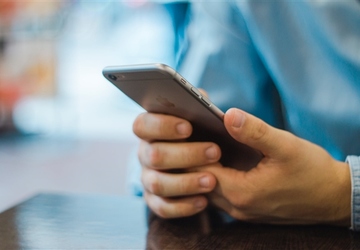How to adjust smartphone settings
Modern smartphones are highly adaptable devices tailored to your preferences and needs. Smartphones are a blend of functionality and style, and adjusting settings can help improve the user experience by making everyday tasks more efficient and enjoyable. Whether you're a techie or just want your phone to work better, these tips will help you get the most out of your device.
Personalize your home screen

The home screen is the first screen you see when you turn on your phone. So why not design it how you want it? First, choose a wallpaper that best represents your personality or hobbies. You can use an image from the gallery or search for it online. Some smartphones also offer live wallpapers or dynamic themes that give the phone's home screen a dynamic look.
Secondly, pay attention to how to arrange your applications in the most convenient way. You can set up folders to contain the same type of apps, such as B. Social media, productivity, or games, all in one place. By using drag-and-drop to add and remove app icons, you can place them in the order you want and navigate them easily.
Don't forget the widgets! Widgets are useful little tools that provide you with information or functionality with just a quick click without having to open the app. Weather widgets, calendar widgets, music player widgets, and many others can be embedded on the home screen to make your mobile phone experience more convenient.
Optimize notification settings
Notifications can be helpful, but only if you avoid constant alerts from the various apps installed on your phone. To do this, customize how notifications appear and are sent from apps on your phone.
Go to Notifications or Apps & Notifications to start setting up your phone. Here, you can choose which apps allow you to send notifications and customize settings for each app, such as sounds, vibrations, and pop-up styles.
Adjust display settings
This is crucial because a smartphone's display settings affect battery life and usability. By easily adjusting these settings to suit your taste, you'll get a better viewing experience and extend your device's battery life.
Brightness is another factor to consider. While the auto-brightness feature may vary based on ambient light, users can save battery by adjusting the brightness to a comfortable level. You can also set up a night mode or blue light filter, which can reduce eye strain, especially when using the phone in low light or at night.
Custom sounds and ringtones
Smartphone sounds, and ringtones can be personalized to provide a customized experience, helping to differentiate notifications. First, decide which melody or vibration tone you want to choose from your phone's internal options or which one you want to download from a trusted source.
Additionally, some smartphones allow you to configure ringtones for specific contacts, so you know who is calling you without looking at the screen. This feature is useful in the above situation, where you cannot hear the default ringtone in a busy or noisy environment.
Take advantage of accessibility features.
We are developing accessibility features for smartphones to make them more user-friendly for people with disabilities. However, they can also benefit everyone by creating more customization options and improving usability.
Use your phone's settings, including text-to-speech, zoom gestures, and colour inversion, as part of accessibility features. These properties can achieve more precise readability and navigation and provide better accessibility based on your characteristics.
Protect your device

When it comes to modern smartphones, security cannot be ignored. Therefore, adjusting your security settings may be the best way to protect your information and data. First, reliable lock screen methods such as PIN, pattern, password or biometric authentication (fingerprint or facial recognition) can be used. Avoid guessing your password combinations, and update your security settings occasionally to ensure full coverage.
Additionally, you can enable features like Find My Device (or other location services) to find your phone if it's lost or stolen. Another feature to protect your data is remote lock and wipe, which can wipe your data if your device is stolen or has unauthorized access.
Manage application permissions
By default, apps request various permissions such as camera, location, contacts, etc. To ensure your security, please check app permissions at least once a week. Open your phone's Settings, navigate to Apps or Applications, and tap each app to customize it.
You can also allow or block certain apps from accessing location services so that information can only be downloaded when necessary. Be aware of apps that require unnecessary data permissions and try to delete such apps or replace them with ones that are more privacy-respecting.
Optimize battery settings
Battery efficiency is one factor that determines the likelihood of a device being used uninterrupted throughout the day. Adjust battery settings based on normal device usage for optimal performance and energy savings. Start by using your phone's battery usage statistics to track battery-draining apps.
Identify power-hungry apps and put them in the background, or take advantage of the battery optimization features provided by your phone's operating system. Some devices have a power saver mode that changes settings like CPU performance, screen brightness, and background sync to extend battery life.
Conclusion
Setting up your smartphone settings doesn't have to be complicated. With these five tips, you can personalize your device and adapt it to your style, preferences, and usage habits. Whether you adjust your screen for optimal viewing or assign a different ringtone to each call, a few tweaks will make your phone experience more enjoyable.
Related Posts
- 4 Cybersecurity Measures to Protect Your Online Identity
- Ensuring the Security of Your Online Accounts Best Practices and Tips
- 8 Best Home Security Systems for Peace of Mind
- The Path Ahead for Renewable Energy Technology
- 5 Blockchain Applications Transforming the Financial Sector
- How to choose the exemplary cloud storage service